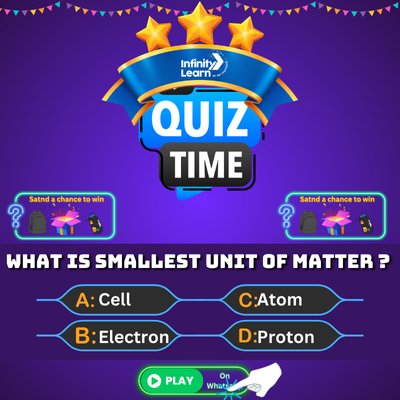Table of Contents
Lines and Angles Class 7 MCQ: Understanding Lines and Angles is a foundational concept in geometry that plays a vital role in developing strong mathematical reasoning. This chapter introduces students to key topics such as types of angles (acute, obtuse, right, straight, reflex), pairs of angles (complementary, supplementary, linear pair, vertically opposite), and the properties of parallel lines intersected by a transversal.
For example, when two lines are crossed by a third line (called a transversal), we observe patterns like alternate interior angles and corresponding angles—concepts that help solve more advanced problems in geometry.
Practicing Multiple Choice Questions (MCQs) on Lines and Angles helps reinforce these ideas in a quick and engaging way. These questions test not only memory but also the ability to apply concepts logically. Regular practice of such Class 7 MCQs is beneficial not just for school exams but also for competitive exams like Olympiads, NTSE, and other entrance tests, where geometry plays a crucial part. By solving these Class 7 Maths MCQs, students can clear their doubts, strengthen their conceptual understanding, and gain the confidence to solve angle-based problems efficiently.
Lines and Angles Class 7 MCQ
The “Lines and Angles” chapter is assessed in most school exams through both objective-type and subjective-type questions. Here’s how the exam pattern generally looks:
| Question Type | Expected Weightage |
|---|---|
| MCQs / 1-mark questions | 3–5 questions |
| Short answer (2-3 marks) | 1–2 questions |
| Long answer (4-5 marks) | 1 question |
| Diagrams-based questions | Frequently included |
| HOTs / Reasoning type | 1 question (optional) |
This chapter introduces students to the basics of geometry related to straight lines, rays, and various types of angles. It builds a conceptual foundation for higher-level topics like triangles, polygons, and coordinate geometry.
Important Topics Covered:
- Line, Line Segment, Ray, Intersecting Lines
- Types of Angles – Acute, Obtuse, Right, Straight, Reflex, and Full angle
- Angle Pair Relationships – Complementary, Supplementary, Linear Pair, Vertically Opposite
- Parallel Lines and Transversals – Corresponding, Alternate Interior, Alternate Exterior, and Co-Interior Angles
- Angle Properties – Sum of angles on a straight line (180°), around a point (360°).
Also check: Lines and Angles Class 7 Extra Questions
MCQ Questions for Class 7 Maths Chapter 5
Q1. Which of the following is not a type of angle based on its measure?
A) Acute angle
B) Reflex angle
C) Obtuse angle
D) Equal angle
Answer: D) Equal angle
Q2. If an angle measures 140°, its supplementary angle is:
A) 50°
B) 40°
C) 60°
D) 30°
Answer: B) 40°
Q3. Which of these angles will always be greater than a right angle but less than a straight angle?
A) 30°
B) 100°
C) 90°
D) 180°
Answer: B) 100°
Q4. A pair of complementary angles must always add up to:
A) 90°
B) 120°
C) 180°
D) 360°
Answer: A) 90°
Q5. An angle measuring more than 180° but less than 360° is called:
A) Right angle
B) Reflex angle
C) Obtuse angle
D) Full angle
Answer: B) Reflex angle
Also Check: Class 7 Maths Lines and Angles Worksheet
Lines and Angles Class 7 MCQ – Pairs of Angles
Q6. Which of the following angle pairs are always formed on intersecting lines?
A) Alternate angles
B) Complementary angles
C) Vertically opposite angles
D) Linear pair
Answer: C) Vertically opposite angles
Q7. Two angles forming a linear pair are always:
A) Equal
B) Complementary
C) Adjacent and supplementary
D) Right angles
Answer: C) Adjacent and supplementary
Q8. If two angles form a linear pair and one of them is 57°, the other is:
A) 133°
B) 123°
C) 43°
D) 57°
Answer: A) 123°
Q9. When two lines intersect, how many pairs of vertically opposite angles are formed?
A) 1
B) 2
C) 3
D) 4
Answer: B) 2
Q10. Which of the following statements is always true about a linear pair of angles?
A) They are both acute
B) They sum up to 180°
C) They form a right angle
D) They are non-adjacent
Answer: B) They sum up to 180°
Also Check: NCERT Solutions for class 7 Maths Lines and Angles
Parallel Lines and Transversal
Q11. If a transversal cuts two parallel lines, the pair of alternate interior angles are:
A) Always unequal
B) Supplementary
C) Equal
D) Complementary
Answer: C) Equal
Q12. When a transversal intersects two parallel lines, which angle pair is not necessarily equal?
A) Corresponding angles
B) Alternate interior angles
C) Alternate exterior angles
D) Consecutive interior angles
Answer: D) Consecutive interior angles
Q13. If corresponding angles formed by a transversal are not equal, then the lines are:
A) Parallel
B) Perpendicular
C) Not parallel
D) Intersecting at right angle
Answer: C) Not parallel
Q14. Which of the following angle pairs are always supplementary when lines are parallel?
A) Vertically opposite
B) Corresponding
C) Alternate interior
D) Co-interior (Consecutive interior)
Answer: D) Co-interior (Consecutive interior)
Q15. Two parallel lines are cut by a transversal. If one of the corresponding angles is 75°, what is the measure of the vertically opposite angle to it?
A) 75°
B) 105°
C) 90°
D) 180°
Answer: A) 75°
Also Check: RD Sharma Solutions Class 7 Chapter 5
Lines and Angles Class 7 MCQ – Angle Calculation and Applications
Q16. If two supplementary angles differ by 58°, the smaller angle is:
A) 61°
B) 58°
C) 62°
D) 61°
Answer: A) 61°
Q17. In a triangle, if one angle is 50° and the second angle is 60°, the third angle is:
A) 80°
B) 90°
C) 70°
D) 60°
Answer: C) 70°
Q18. Which of the following combinations is not possible for the angles of a triangle?
A) 60°, 60°, 60°
B) 90°, 45°, 45°
C) 100°, 40°, 40°
D) 120°, 30°, 40°
Answer: D) 120°, 30°, 40° (sum = 190° > 180°)
Q19. If angle A and angle B form a linear pair and angle A is twice angle B, the measures are:
A) 120°, 60°
B) 100°, 80°
C) 130°, 50°
D) 140°, 40°
Answer: A) 120°, 60°
Q20. Two angles are supplementary. If one is 5 times the other, the smaller angle is:
A) 30°
B) 25°
C) 35°
D) 20°
Answer: B) 30°
Geometry-Based Logical MCQs
Q21. If two angles are complementary and one is three times the other, the larger angle is:
A) 67.5°
B) 72°
C) 30°
D) 45°
Answer: B) 67.5°
Q22. A straight angle is formed when:
A) Two rays point in the same direction
B) Two rays meet at 90°
C) Two rays extend in opposite directions
D) Two lines are perpendicular
Answer: C) Two rays extend in opposite directions
Q23. Which angle is formed when the hands of a clock show 3 o’clock?
A) Right angle
B) Acute angle
C) Straight angle
D) Reflex angle
Answer: A) Right angle
Q24. Which of the following best describes vertically opposite angles?
A) Adjacent and equal
B) Non-adjacent and equal
C) Supplementary and unequal
D) Always obtuse
Answer: B) Non-adjacent and equal
Q25. Which angle is equal to its supplementary angle?
A) 45°
B) 60°
C) 90°
D) 120°
Answer: C) 90°
Challenging Conceptual Questions
Q26. If two lines are cut by a transversal and alternate interior angles are not equal, then the lines are:
A) Skew
B) Parallel
C) Not parallel
D) Perpendicular
Answer: C) Not parallel
Q27. Which pair of angles will be equal only if the lines are parallel?
A) Vertically opposite angles
B) Corresponding angles
C) Adjacent angles
D) Complementary angles
Answer: B) Corresponding angles
Q28. Which angle pair is not necessarily formed when two lines intersect?
A) Alternate interior angles
B) Linear pair
C) Vertically opposite angles
D) Adjacent angles
Answer: A) Alternate interior angles
Q29. When two lines are parallel, which angle property can help confirm their parallelism?
A) Complementary angles
B) Adjacent angles being equal
C) Equal alternate interior angles
D) Supplementary vertically opposite angles
Answer: C) Equal alternate interior angles
Q30. The angle formed between the minute and hour hand at 6 o’clock is:
A) 180°
B) 90°
C) 150°
D) 120°
Answer: A) 180°
Q31. Which of the following statements is false?
(a) Two vertically opposite angles are always equal.
(b) Corresponding angles are always supplementary.
(c) Linear pair of angles add up to 180°.
(d) Alternate interior angles are equal when lines are parallel.
Answer: (b) Corresponding angles are always supplementary.
(Explanation: They are equal, not necessarily supplementary.)
Q32. Which of the following is not necessarily true when a transversal intersects two parallel lines?
(a) Alternate exterior angles are equal.
(b) Consecutive interior angles are supplementary.
(c) All vertically opposite angles are equal.
(d) Adjacent corresponding angles are complementary.
Answer: (d) Adjacent corresponding angles are complementary.
(Explanation: They are equal, not complementary.)
Q33. If two lines are intersected by a transversal in such a way that alternate interior angles are unequal, then the lines are:
(a) Always parallel
(b) Perpendicular
(c) Not parallel
(d) Coinciding
Answer: (c) Not parallel
Q34. Which of the following statements is incorrect?
(a) A linear pair of angles are always supplementary.
(b) Two lines intersecting at a point form only one pair of vertically opposite angles.
(c) If two lines are parallel, corresponding angles are equal.
(d) Interior angles on the same side of a transversal are supplementary.
Answer: (b) Two lines intersecting at a point form only one pair of vertically opposite angles.
(Explanation: They form two pairs of vertically opposite angles.)
Q35. Which of the following is not possible when a transversal cuts two lines?
(a) Formation of linear pairs
(b) Formation of right angles
(c) Equal alternate interior angles when lines are not parallel
(d) Creation of eight different angles
Answer: (c) Equal alternate interior angles when lines are not parallel
Q36. Choose the false statement:
(a) A straight angle measures 180°.
(b) Reflex angles are always smaller than right angles.
(c) The sum of angles on a straight line is 180°.
(d) Complementary angles always add up to 90°.
Answer: (b) Reflex angles are always smaller than right angles.
(Explanation: Reflex angles are greater than 180°.)








